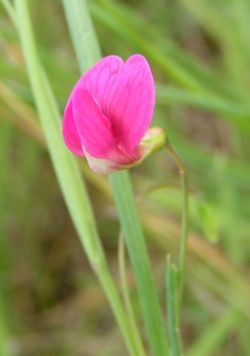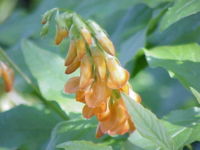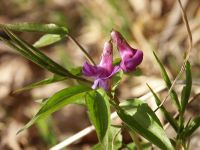Lathyrus
| Sweet peas {{{status}}} Fossil range: {{{fossil_range}}}
| ||||||||||||||||||||||||||||||||||||||||||||||||||||||||||||||||||
|---|---|---|---|---|---|---|---|---|---|---|---|---|---|---|---|---|---|---|---|---|---|---|---|---|---|---|---|---|---|---|---|---|---|---|---|---|---|---|---|---|---|---|---|---|---|---|---|---|---|---|---|---|---|---|---|---|---|---|---|---|---|---|---|---|---|---|
 Grass Vetchling, Lathyrus nissolia | ||||||||||||||||||||||||||||||||||||||||||||||||||||||||||||||||||
| Plant Info | ||||||||||||||||||||||||||||||||||||||||||||||||||||||||||||||||||
| ||||||||||||||||||||||||||||||||||||||||||||||||||||||||||||||||||
| Scientific classification | ||||||||||||||||||||||||||||||||||||||||||||||||||||||||||||||||||
| ||||||||||||||||||||||||||||||||||||||||||||||||||||||||||||||||||
| [[{{{diversity_link}}}|Diversity]] | ||||||||||||||||||||||||||||||||||||||||||||||||||||||||||||||||||
| {{{diversity}}} | ||||||||||||||||||||||||||||||||||||||||||||||||||||||||||||||||||
| Binomial name | ||||||||||||||||||||||||||||||||||||||||||||||||||||||||||||||||||
| {{{binomial}}} | ||||||||||||||||||||||||||||||||||||||||||||||||||||||||||||||||||
| Trinomial name | ||||||||||||||||||||||||||||||||||||||||||||||||||||||||||||||||||
| {{{trinomial}}} | ||||||||||||||||||||||||||||||||||||||||||||||||||||||||||||||||||
| Type Species | ||||||||||||||||||||||||||||||||||||||||||||||||||||||||||||||||||
| {{{type_species}}} | ||||||||||||||||||||||||||||||||||||||||||||||||||||||||||||||||||
| Species | ||||||||||||||||||||||||||||||||||||||||||||||||||||||||||||||||||
| See text. | ||||||||||||||||||||||||||||||||||||||||||||||||||||||||||||||||||
| [[Image:{{{range_map}}}|{{{range_map_width}}}|]] | ||||||||||||||||||||||||||||||||||||||||||||||||||||||||||||||||||
| Synonyms | ||||||||||||||||||||||||||||||||||||||||||||||||||||||||||||||||||
| {{{synonyms}}} |
The genus Lathyrus consists of the sweet peas and vetchlings, flowering plants in the legume family Fabaceae. There are approximately 160 species of Lathyrus; they are native to temperate areas, with a breakdown of 52 species in Europe, 30 species in North America, 78 in Asia, 24 in tropical East Africa, and 24 in temperate South America.[1] There are annual and perennial species which may be climbing or bushy. This genus has numerous sections, including Orobus, which was once a separate genus.[2]
The genus includes the garden sweet pea (Lathyrus odoratus) and the perennial everlasting pea (Lathyrus latifolius). Flowers on these cultivated species may be rose, red, maroon, pink, white, yellow, purple or blue and some are bicolored; they are also fragrant, which makes them a very popular garden plant. Cultivated species are susceptible to fungal infections including downy and powdery mildew. Lathyrus species are used as food plants by the larvae of some Lepidoptera species including Grey Chi, Latticed Heath (both recorded on Meadow Vetchling) and Chionodes braunella.
Other species are grown for food, including L. sativus and L. cicera, and less commonly L. ochrus and L. clymenum. L. tuberosus is grown as a root vegetable for its starchy edible tuber.
The seeds of some Lathyrus species contain a toxic amino acid and if eaten in large quantities can cause lathyrism, a serious disease.
Species
- Lathyrus aureus (Golden Pea)
- Lathyrus annuus (Red Fodder Pea)
- Lathyrus chloranthus
- Lathyrus japonicus (Sea Pea)
- Lathyrus lanszwertii (Nevada Pea)
- Lathyrus latifolius (Everlasting Pea)
- Lathyrus linifolius (Bitter Vetch)
- Lathyrus nervosus (Lord Anson's Blue Pea)
- Lathyrus nissolia (Grass Vetchling)
- Lathyrus odoratus (Sweet Pea)
- Lathyrus pratensis (Meadow Vetchling)
- Lathyrus sativus (Indian Pea)
- Lathyrus sphaericus, Spring vetchling
- Lathyrus sylvestris (Flat Pea-vine)
- Lathyrus tingitanus (Tangier Pea)
- Lathyrus tuberosus (Tuberous Pea)
Notes
- ↑ Asmussen, Conny B; Liston, Aaron (March 1998). "Chloroplast DNA Characters, Phylogeny, and Classification of Lathyrus (Fabaceae)". American Journal of Botany 85 (3): 387.
- ↑ Fred, Edwin Broun; Baldwin, Ira Lawrence; McCoy, Elizabeth (1932). Root Nodule Bacteria and Leguminous Plants. UW-Madison Libraries Parallel Press. pp. 142. ISBN 1-893311-28-7.

